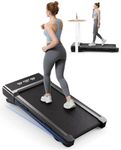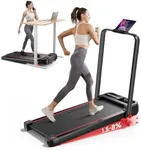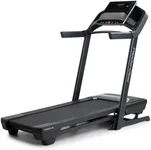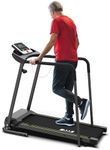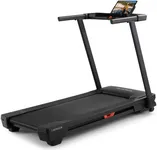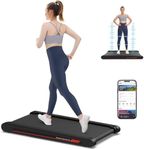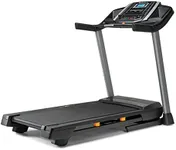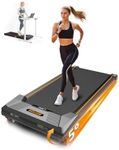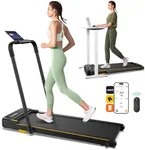Buying Guide for the Best Treadmills
Choosing the right treadmill can make a big difference in your fitness journey, whether you’re a beginner or a seasoned runner. The best approach is to think about how you plan to use the treadmill, the space you have available, and the features that will keep you motivated and comfortable. By understanding the key specifications, you can find a treadmill that matches your exercise habits and helps you reach your goals.Motor Power (Horsepower/HP)Motor power tells you how strong the treadmill’s engine is, usually measured in horsepower (HP). This is important because a stronger motor can handle heavier use and higher speeds without straining. If you plan to walk, a lower HP (around 1.5-2.0) is usually enough. For jogging, look for something in the 2.0-2.5 HP range. If you’re a runner or plan to use the treadmill often and at higher speeds, aim for 2.5 HP or more. Think about your workout style and pick a motor that matches your intensity and frequency.
Running Surface SizeThe running surface is the belt area where you walk or run. Its size matters for comfort and safety. A shorter and narrower belt (around 16” x 50”) is fine for walking, but if you’re taller, have a longer stride, or plan to run, a larger surface (at least 20” x 55” or more) is better. Consider your height and how you’ll use the treadmill to choose a belt size that gives you enough room to move naturally.
CushioningCushioning refers to how much shock absorption the treadmill deck provides. Good cushioning reduces impact on your joints, making workouts more comfortable and lowering the risk of injury. Some treadmills have adjustable cushioning, while others have a fixed level. If you have joint concerns or plan to run a lot, look for better cushioning. If you prefer a firmer, road-like feel, less cushioning might suit you. Think about your comfort and any physical needs when deciding.
Incline OptionsIncline lets you tilt the treadmill deck to simulate walking or running uphill. This feature is important for adding variety and intensity to your workouts. Manual incline means you adjust it by hand, while automatic incline lets you change it with a button. If you want challenging workouts or to burn more calories, look for a treadmill with a higher maximum incline and easy adjustment. If you just want basic exercise, a simple incline or none at all may be enough.
Speed RangeSpeed range tells you how fast the treadmill can go. Walkers are usually fine with a top speed of 6-8 mph, while runners may want 10 mph or more. If you plan to do interval training or sprints, a higher top speed is important. Match the speed range to your fitness level and workout plans.
Weight CapacityWeight capacity is the maximum user weight the treadmill can safely support. This is important for safety and durability. Always choose a treadmill with a weight limit that’s higher than your current weight to ensure stable performance and a longer lifespan for the machine.
Foldability and StorageFoldability refers to whether the treadmill can be folded up for storage. This is important if you have limited space. Some treadmills fold easily and have wheels for moving, while others are fixed. If you need to store your treadmill between uses, look for a model that folds and fits your available space.
Display and ProgramsThe display shows your workout stats like time, speed, distance, and calories. Some treadmills also offer built-in workout programs for variety and motivation. If you like guided workouts or tracking your progress, look for a treadmill with a clear display and a good selection of programs. If you prefer simple workouts, a basic display may be enough.


